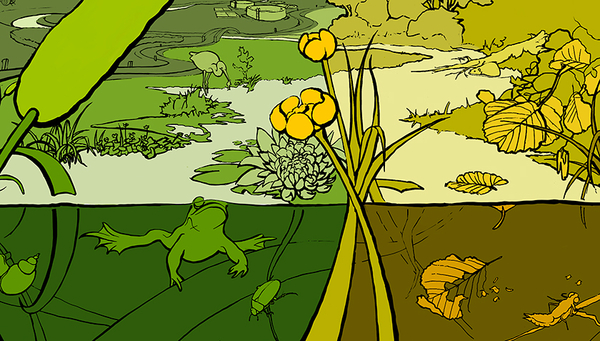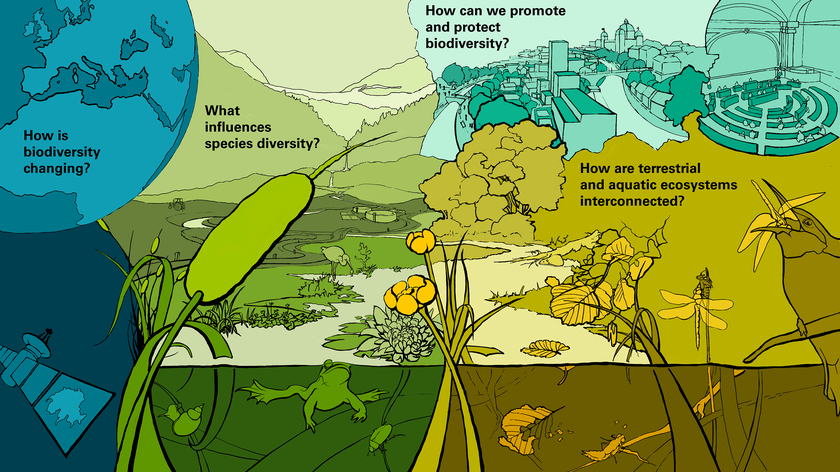News Detail
International Biodiversity Day: “We are part of the solution”
May 20, 2021 |
In 2020, Eawag and WSL jointly launched the Blue-Green Biodiversity (BGB) research initiative to study biodiversity at the interface of water and land. Currently, 13 postdoctoral researchers from all over the world are part of this research initiative. Six of them present their projects in short videos. A further eight projects have been approved and will start during the summer of 2021.
Blue-green habitats – hotspots of biodiversity
Aquatic and terrestrial ecosystems are closely interconnected and enrich each other. However, these hotspots of biodiversity are threatened by human-induced changes, such as climate change, urbanisation and intensive agriculture. The graphic illustrates how the habitats of water and land intertwine and influence each other, as well as the questions the BGB research initiative is investigating.
How is biodiversity changing?
Biodiversity is declining dramatically worldwide. BGB is investigating how species diversity is changing in space and time - both locally, for example, in the Thur catchment area in Switzerland, and also globally with the help of data archives and satellite data. The time periods studied range from a few decades to millions of years.
What influences species diversity?
Land use changes, such as intensified agriculture and urbanisation, climate change, the overexploitation of natural resources and invasive species alter habitats and threaten biodiversity. BGB investigates how these factors influence biodiversity.
How are terrestrial and aquatic ecosystems interconnected?
Ecosystems in water and on land are closely linked. For example, leaves that fall from trees into water serve as food for microorganisms. These are eaten by predatory insect larvae that leave the water after their final larval stage. On land, these insects serve as particularly nutritious food for birds. BGB aims to study this networked biodiversity holistically.
How can we promote and protect biodiversity?
BGB aims to develop practical recommendations for praxis and policy to stop or at least reduce species loss as quickly as possible. How can habitats in residential areas be networked through blue-green infrastructure? Or, what does successful biodiversity policy look like?
Cover picture: Stefan Scherrer


